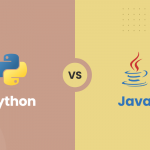Top Legacy Application Modernization Strategies – A Detailed Comparison

Modernization and migration are processes that we can find in every nook and cranny of the business world now. In a survey, 91% respondents have attested that application modernization is essential for organizational adaptability. There arrives a time when the legacy system starts crumbling down, and modernization needs strikes on the door.
We remember the words of the late Mark Hurd, who led Hewlett Packard and Oracle, when discussing how modernization of legacy software applications has translated from a mere step to a bare necessity. He said, “Legacy systems are a ticking time bomb. They are expensive to maintain, difficult to integrate with modern technologies, and a barrier to innovation. Modernizing these systems is essential to staying relevant and meeting the needs of today’s customers.”
However, modernization is never successful without a strategy, so ultimately it boils down to executing it through a process that is proven to be the best approach for a given technical scenario. Making the right choice comes with countless benefits, but walking on the wrong can prove disastrous. As Michael Porter, Harvard Business School academic has rightly remarked, “the essence of strategy lies in choosing what not to do”.
The success of a modernization effort hinges on choosing the right application modernization approach, one that addresses issues of scalability, agility, and productivity. We endeavor to dissect various strategies assisting you towards a future where your applications are not only up-to-date but also poised for sustained growth and innovation.
To Drive Legacy Modernization is to Bring About a Sea Change
Legacy framework, with its antiquated technologies and inflexible frameworks, can shake the technological set-up of even those that have remained focused on their technology initiatives. The key to unleashing their true potential lies in modernizing these applications.
For corporations that want to modernize their legacy systems, they have to undertake a comprehensive overhaul of existing applications. The process of modernizing legacy applications comes into the picture here. It rejuvenates its technological set-up with cutting-edge technologies and aligns it with contemporary business processes. This is essential for many reasons such as thriving in a landscape where an unprecedented technological shift can occur at any time.
IBM, for instance, provides a quintessential example of the monumental impact of legacy system modernization. Faced with the challenges posed by its intricate and aging IT infrastructure, IBM decided to get rid of its legacy system. The tech giant undertook the migration of critical applications and workloads to the cloud, embraced agile development methodologies, and harnessed emerging technologies such as AI and blockchain, successfully modernizing all its mainframe systems.
The results for IBM were remarkable, as it witnessed a clear improvement in operational efficiency, significantly reducing the time to market for new products and services. The outcome became visible in elevated customer experience, and to an extent solidified IBM’s position in an aggressively competitive market. This modernized infrastructure empowered IBM to provide unparalleled support for its clients’ digital transformation endeavors.
Why is the approach you choose for legacy app modernization important?
IBM’s transformation journey stands as a shining example of how the decision to modernize legacy applications fetches innumerable operational and business benefits. However, this journey is marked by a meticulous selection of the modernization strategy.
IBM recognized that a one-size-fits-all approach wouldn’t suffice, given the diverse range of legacy systems at play. Instead, IBM carefully assessed each legacy application, considering factors such as the application’s criticality, interdependencies with other systems, and potential business impact. For instance, IBM opted for re-hosting for certain non-critical applications, moving the existing code to a more modern and efficient infrastructure without altering its core functionalities. On the other hand, for mission-critical applications, a re-architecture strategy was implemented, wherein a complete overhaul was undertaken through new technologies and architectures.
In general, several key factors should be considered by corporations embarking on the journey of modernizing legacy systems. These include:
– A comprehensive assessment of the existing setup through building a thorough understanding of the legacy applications’ architecture, dependencies, and business relevance.
– Considering the organization’s long-term goals to build a technological roadmap.
– Aligning the chosen migration strategy with the objectives, so that it not only addresses current challenges but also positions the organization for future growth.
What are various legacy application modernization strategies?
Legacy app modernization generates immense business value, but when steered with the right modernization strategy. Seeking inputs from our application modernization and migration experts at Finoit who have dirtied their hands in several assignments across domains, we delve into standard strategic approaches to familiarize you with what each offers and how it helps in achieving modernization goals.
Replatforming
Replatforming is best suited when the core functionality of the application is still valuable, but it needs to be migrated to a modern and efficient computing environment. The process involves several key steps. First, there’s a thorough assessment of the current platform, where you have to evaluate elements such as hardware infrastructure, operating systems, middleware, and software dependencies. The assessment identifies the specific areas where the existing platform falls short and highlights the requirements for the new environment.
Now comes the most important step in the process – selecting the new platform. The choice is influenced by factors like compatibility with the application, availability of resources, budget considerations, and alignment with the organization’s broader technology strategy. The new platform could be a cloud-based service like AWS, Azure, or Google Cloud, or it might involve upgrading to a more recent on-premises solution.
Compatibility and migration planning are pivotal in the process, as they ensure that the existing application and its associated components can seamlessly operate in the chosen platform. Based on the replatforming needs, you may have to perform code modifications, adjustments to configurations, or integration with external services.
Refactoring
There are times when a legacy system will demand making structural improvements to code, however, without altering its core functionality. This process is termed refactoring and is best undertaken when a codebase becomes difficult to understand, maintain, or extend due to accumulated technical debt or evolving requirements.
Refactoring could be propelled by poor initial design, rushed development, or changing business needs, creating the need for redesign and code enhancement. By improving code readability, it improves the application’s performance, and makes it more robust and adaptable.
The technicalities of refactoring encompass a range of practices and techniques, such as:
- Simplifying complex algorithms
- Breaking down monolithic functions into smaller, modular components
- Improving the naming conventions of variables and functions to make the code more self-explanatory.
Refactoring might also remove redundant or duplicated code, and restructure the class hierarchies to ensure better adherence to object-oriented principles.
Rearchitecting
Rearchitecting in software development refers to the substantial redesign and restructuring of an application’s core architecture. It is typically undertaken when the existing architecture is no longer capable of meeting the evolving demands of the application. So, in other words, you build a new legacy system architecture. The strategy is best suited for cases where incremental changes or refactoring are insufficient to address the underlying problems.
In re-architecting, you have to choose new frameworks or technologies, redefine component relationships, and reorganize data flows to optimize performance and scalability. It may also entail reevaluating the system’s deployment model, potentially migrating to a cloud-based infrastructure, or adopting microservices architecture for enhanced flexibility and scalability.
Re-architecting is a substantial undertaking and often involves significant time, effort, and resources. It requires a deep understanding of the existing system, as well as a clear vision of the desired state.
Rebuilding
Sometimes, the legacy system becomes fundamentally unsustainable due to outdated technology, architectural flaws, or a need for a radical shift in functionality. In such situations, none of the above-discussed strategies help, and the system can be adapted to the new needs only through rebuilding. In such cases, strategies such as refactoring or re-architecting are more time-consuming and error-prone.
In rebuilding, first, you drive a thorough analysis of the existing application to understand its pain points. The analysis can be of great help in making informed decisions about what aspects of the original application should be retained, improved, or completely re-envisioned. This step guides developers in selecting appropriate technologies, frameworks, and tools for the new application based on the updated requirements and industry best practices. Here, they bring in updated programming language capabilities, advanced development platforms, and cutting-edge libraries and frameworks.
Once the technological foundation is established, developers embark on the process of designing the architecture. They redefine the overall structure of the application, redesign database schemas, establish component relationships, and determine data flows.
Also Read: What are the various engagement models for software development?
Replacing
At times, when the current system has become obsolete, lacking critical features, which rather than an updated system, can be availed through modern technologies, replacing is the best choice of application modernization. So, none of the modernization strategies – refactoring, re-architecting, rebuilding, etc. serve the purpose, and the existing system is beyond salvageable.
Replacing cannot take place unless you assess your legacy system’s strengths, weaknesses, and functionalities. Conducting this study helps in defining the requirements and objectives for the replacement application. Careful consideration must be given to features that are to be replicated, enhanced, or even streamlined in the new system.
Migration is central to replacing, whereby you transition data, configurations, and sometimes user accounts from the old system to the new one. However, it requires careful planning and execution to minimize disruptions and ensure a seamless transition for end-users.
Rehosting
What about scenarios when you don’t feel the need to make substantial changes to your application’s architecture or functionality? For such cases, rehosting is the viable choice, where you migrate your legacy app to a different hosting environment. The reasons to rehost an application can be many, ranging from your intention to optimize costs, enhance performance, or get rid of outdated infrastructure.
The process of rehosting begins through analysis of the infrastructure ecosystem that comprises evaluation of its components like hardware, operating system, and network setup. The migration team assesses the current environment by examining its configurations, dependencies, and performance metrics, and creates benchmarks for the new environment.
With inputs available, the migration team builds the target environment, by setting up the new hardware, virtual machines, or cloud infrastructure to ensure compatibility with the application. In this process, it’s important to replicate configurations and parameters as closely as possible to maintain the application’s expected behavior in the new environment.
The migration process itself involves transferring all components of the application, including databases, files, configurations, and any other relevant data, to the new environment. Methods deployed may include virtualization and containerization, or by using migration tools provided by cloud service providers.
Also Read: Legacy Application Migration to Cloud: Pros and Cons
Comparing strategies for Legacy Application Modernization
| Strategy | Complexity | Timeframe | Risk | Flexibility | Scalability | When to choose |
| Replatforming | Relatively simple changes to the existing codebase and infrastructure. | Involves quick modifications and migration of the application to a new platform or environment. | Low risk of disrupting existing functionalities due to minimal code changes. | Provides moderate flexibility for future changes, but not as much as other strategies. | Can handle moderate increases in workload, with some limitations in extreme scalability needs. | The goal is to quickly modernize without major disruptions to existing functionalities. |
| Refactoring | Involves restructuring and optimizing the existing code without changing its core functionality. | Requires time for thorough analysis and adjustments to the codebase. Focuses on improving code quality and efficiency. | Involves some risk of introducing bugs or unintended consequences during the refactoring process. | Enhances adaptability and makes the application more flexible for future updates and changes. | Improves scalability by optimizing code and architecture, allowing for better handling of increased workloads. | The existing codebase has potential for optimization and improved efficiency, and there’s a need for better adaptability |
| Re-architecting | Involves significant changes to the application’s architecture and may require rewriting parts of the codebase. | Requires substantial time for planning, redesign, and implementation of the new architecture. | Involves a higher risk of potential disruptions or challenges due to major structural changes. | Provides a high level of flexibility, making it easier to adapt to evolving requirements and technologies. | Can be built for high scalability, accommodating substantial increases in workload with a redesigned architecture. | The existing architecture is fundamentally limiting and a more flexible, scalable solution is needed. |
| Rebuilding | Involves rebuilding the application from scratch, often using modern technologies and practices. | Requires a substantial amount of time as it entails creating a new application from the ground up. | Involves significant risk due to the complete overhaul of the existing application. | Offers the highest level of flexibility as it allows for the adoption of the latest technologies and best practices. | Can be designed for optimal scalability from the outset, accommodating even substantial increases in workload. | The existing application is outdated or fundamentally flawed, and a fresh start with modern technologies is required. |
| Replacing | Involves replacing the existing application with a new one, often off-the-shelf or from a third-party vendor. | Requires time for evaluating, selecting, and integrating a suitable replacement application. | Carries risk in terms of potential integration challenges, data migration, and adapting to a new system. | Flexibility depends on the capabilities of the replacement application, but it may offer standard customization options. | Scalability depends on the capabilities of the replacement application, but modern solutions often offer good scalability options. | The exisitng application is no longer viable or does not meet business needs, and a suitable replacement is available. |
| Rehosting | Involves moving the application to a different environment, often on the cloud or a different infrastructure. | Can be executed relatively quickly, as it primarily involves transferring the existing application. | Low risk of disrupting existing functionalities, as the core code remains unchanged. | Offers limited flexibility as it mainly involves transferring the existing application without significant changes. | Scalability depends on the capabilities of the new hosting environment, but it can generally handle moderate increases in workload. | Migrating to new hosting environment is essential without major code modifications or disruptions to existing functionalities |
Modernize your legacy system with the right strategy
Modernizing existing legacy systems has become more of a rule than a need for enterprises these days. Driven by the need to optimize and improve performance across areas, modernization brings benefits that are not confined to the business alone but reverberate throughout the industry.
These application modernization strategies provide value when they are implemented after careful analysis of business requirements. When rightly executed, they offer agility to your technological infrastructure and equip your business to adapt to ongoing shifts.
As 33% of businesses have found the dearth of skills and expertise as a stumbling block in the implementation of these strategies. By using the experience of a reputable legacy software modernization company, you can overcome this challenge. To discover how you can implement a suitable modernization strategy in a cost-efficient manner, get in touch with us.


